
TTArtisan AF 75mm F2 Review
2024 has been the year that TTArtisan has embraced producing autofocus lenses, and I had many good things to say about their 35mm F1.8 (my review here) and 56mm F1.8 lenses (my review here). But those were APS-C lenses, which are slightly easier to engineer than lenses for larger sensors. But TTArtisan is back with their first full frame autofocus lens – the TTArtisan AF 75mm F2. Have they been able to successfully level up as a lens maker once again? Find out by watching my video review or by reading on in the text review.
Follow Me @ YouTube | Patreon | Instagram | Facebook | DA Merchandise | Flickr | 500px | X
Thanks to TTArtisan for sending me a review copy of this lens. As always, this is a completely independent review. All opinions and conclusions are my own. *The tests and most of the photos that I share as a part of my review cycle have been done with the Sony a7RV along with the Sony Alpha 1 that serve as my benchmark cameras for Sony E-mount lenses.
__________________________________________________________________________________________________
There really aren’t a lot of full frame 75mm options. We’ve seen some recent 75mm APS-C lenses (like the Viltrox Pro and Sirui Sniper 75mm F1.2), but the primary alternative to this new TTArtisan 75mm remains the Samyang AF 75mm F1.8 that I reviewed in 2020. And while I ended up gifting my copy to a nephew, I do have the Samyang V-AF 75mm T1.9 lens that has the same optical formula on hand. One area where TTArtisan is going to fair very well in this comparison is on price, as the Samyang AF lens retails for $350 while the V-AF version is a much more expensive $650 USD. The TTArtisan lens will debut at just $178, so nearly half the price of the Samyang version. While I think there are a few areas where the Samyang has some advantage, the same is true for TTArtisan’s new 75mm F2, which is very capable of producing beautiful images on your full frame camera.

It can of course be used on APS-C cameras as well, where it will give a 112.5mm full frame equivalent framing – very nice for slightly tighter framed portraits. I found that handy in an event setting to get a little more reach.

This is also the first of TTArtisan’s autofocusing lenses to receive an aperture ring, so it is great to see them moving forward in their development towards more feature-rich lenses while also keeping an eye on pricing.

Investing in a full frame mirrorless camera (this lens will be available not only on Sony but also Nikon Z-mount) can be very expensive, so the idea of getting a solid prime lens for under $200 is very intriguing. Let’s break things down in detail…
Build and Handling
The TTArtisan AF 75mm F2 follows the trend that I’ve seen with their autofocusing lenses of feeling higher quality than what you might expect. The lenses have a very nice metal body with an anodized metal finish. Put simply, the lens looks and feels far more premium than the price would suggest.

That metal housing does come at the cost of weight, however, and the TTArtisan 75mm is definitely heavier than the more plasticky Samyang lens. The Samyang weighs in at a lightweight 230g, but the E-mount version of the TTArtisan lens is heavier at 328g (11.57oz). Still not heavy in an absolute sense, but obviously considerably heavier.
For some reason TTArtisan has not included external measurements in their release materials, so I’ve done my own measurements that may not perfectly align with the official measurements when released. I measure the lens at 65mm in diameter and 73mm in length (2.55 x 2.87″). That’s the same diameter as the Samyang lens but an additional 4mm in length. It is still a very compact lens that fits in the palm of my hand. Front filter threads are 62mm; not one of the most common sizes, but reasonably common.

In my opinion, this is actually quite a handsome little lens. It has an anodized black finish that is very clean and timeless. Previous APS-C lenses have had a sculpted area between the lens mount and the focus ring, like this:

But now TTArtisan has filled that space with an aperture ring. It is the standard style aperture ring that has “clicks” or detents at one third stop intervals along with markings for all full aperture stops.

There is a space between F16 and A (Auto) while will allow you to control aperture from within the camera, though I would like a little more resistance between the F16 and A, as there’s not much more resistance than the standard aperture stops.

There are no switches on the lens barrel. This makes for a very clean looking design, but I would obviously prefer having an AF/MF switch.
At the rear of the lens we have a metal lens mount complete with the appropriate electronic contacts, though I don’t see a weather sealing gasket.

There are nine aperture blades that do a reasonable job of maintaining a circular aperture. Here’s look stopped down over 3 stops at F5.6:

The included lens cap has a new font for the TTARTISAN logo imprinted on it, and I think it looks smart and modern.

TTArtisan has finally heeded my feedback for an improvement to the lens hood design, which is a bit more traditional. The shape is slightly unique, but it is a more standard bayonet style without the “letterbox” opening at the front and can actually be reversed for storage.

The lens hood is plastic and nothing special, but it bayonets on with reasonably good precision and locks into place fine.
The manual focus ring is ribbed in metal and moves with a nice amount of damping, though I can feel a little “drag” from the focus motor when making faster adjustments. The active focus area will automatically magnify when you start to focus, and this helps visually confirm accurate focus. Focus throw feels like it is somewhere near 170° of rotation.

One final interesting design element is that the rear lens cap has a USB-C port along with electronic contacts inside and will actually allow you to do firmware updates to the lens through a computer. It’s an interesting alternative to having a USB-C port built right into the lens, though I do slightly prefer the built-in option in case you lose the rear lens cap at some point.

The minimum focus distance of the TTArtisan 75mm matches the focal length (75cm) and has a fairly low level of magnification. The Samyang can focus closer (69mm) and sports a 0.13x magnification, so while TTArtisan does not specify the magnification level, it looks to be not much higher than 0.10x.

I definitely noticed not being able to get as close to subjects as what I would like. Here’s an example of a real world minimum focus distance shot.

All told, however, there’s much more to like here than there is to dislike. The addition of the aperture ring is a nice step in the right direction, and the improved lens hood is also welcome. The lens definitely feels much more premium than the Samyang 75mm F1.8, which is a big win for a lens that costs half as much.
Autofocus and Video
TTArtisan has equipped the AF 75mm F2 with an STM (stepping motor). Autofocus noise is relatively low. There is a faint whirring sound during autofocus changes, but I could mostly only hear it in a very quiet environment or with my ear pressed close.
Autofocus accuracy was fairly good, and this shot of Ferrari (at F2) shows that the very shallow depth of field is where it is supposed to be – right on his iris.


I got good eye focus on human subjects as well when I took the lens to a church setting to take photos of the speaker.

Here’s another example of good focus on a non-trackable subject.

I tested focus speed both indoors and outdoors, and my impressions are that focus speed is averagely fast. It’s not instantaneous like the lenses equipped with the best linear motors, but neither is it slow. There is a split second pause while inertia builds and focus takes place, but the focus transition is then pretty snappy. There is no visible stepping apparent. Focus speed was a little faster outdoors in excellent light than what it was in my indoors test.
I wouldn’t use this lens for tracking fast action, but for most ordinary photography work autofocus was just fine. Modern autofocus on mirrorless – even with inexpensive lenses – is just so much better than what we got even from expensive lenses in the DSLR era.
Video AF for focus pulls was reasonably good. Focus pulls were largely smooth and fast, though I do see a visible step or two during focus pulls, and an occasionally rack in the wrong direction.
My hand test (where I alternately block and then unblock the camera’s view of my face with my hand) was fairly good. There’s good confidence going from the hand to the eye in terms of reactiveness, though there was an occasion pulse in there that was a bit distracting. There’s also enough visible focus breathing to make focus pulls feel a little more abrupt.

All in all, pretty much what I expected. The bottom line on autofocus is that it really is pretty good for A) such an inexpensive lens and B) being from a company that is just learning how to build autofocus motors. My experience with many of these companies is that they are fast learners; between firmware updates and new designs in the future, expect TTArtisan to continue to get a lot better at autofocus very quickly.
Image Quality Breakdown
TTArtisan has given us an optical design of ten elements in seven groups, which includes 4 HRI (High Refractive Index) elements and 1 ED (Extra Low Dispersion) element. The MTF chart looks better than the recent 56mm F1.8 lens, a lens that I felt actually performed fairly well in the real world.

The MTF shows a sharp, high contrast center with a moderate dip in the midframe and then a sharper decline right at the edge of the frame.
While this isn’t delivering results anywhere near as sharp as the recent 85mm F1.4 GM II lens that I reviewed from Sony, I would say that results are, in general, pretty satisfyingly sharp. Here’s a shot and crop at F2 taken on a 61MP Sony a7RV.


It’s pretty crazy to think that a few years ago there was a lot of angst over whether or not expensive lenses were going to be able to resolve Sony’s ultra high resolution 61MP sensor, and here were are with $175 lenses able to do it just fine.
We’ll dig into the details by taking a look at vignette and distortion. No significant issues here. There’s a small amount of pincushion distortion (just enough to flattering) and a minimal amount of vignette. For portraits you would probably be better off leaving this uncorrected.

A manual correction of the distortion required a -5 on the Lightroom slider and a +32 on the vignette correction slider. This is a really nice performance for a budget lens.
Longitudinal chromatic aberrations were an issue with TTArtisan’s first AF lens (the 35mm F1.8), but TTArtisan told me personally that this was an area that they had focused on improvements, and with some definite success. You can see a nice control of fringing before and after the plan of focus here.

This shot of late summer wildflowers has plenty of potential for fringing, but while we see a bit of blooming on some of the edges, there is very little color fringing.


Lateral chromatic aberrations show up near the edge of the frame in transitions from dark to light areas. You can see from the edge of my test chart that there is essentially no fringing.

So how about resolution? The 61MP sensor on my Sony a7RV represents the highest resolution currently available on any full frame camera, so this is a strong challenge for the TTArtisan 75mm. My review standard is to examine results at a 200% magnification. That is a lot to ask of any lens, much less one this inexpensive. Here’s a look at the test chart that crops throughout the review come from:

And here is a look at F2 crops from the center, then mid-frame, and then extreme lower right corner:



I would say that the center looks a little worse than what I would expect from the MTF while the corners look better than expected. Detail and resolution across the frame is actually pretty good, though there’s a slight lack of contrast that fits what I saw in real world shots.
While contrast isn’t quite as high as what I would like, I will say that TTArtisan has actually struck a nice balance here between having sufficient contrast and sharpness while retaining a very nice out of focus rendering. We’ll talk more about bokeh in a moment, but note in this shot that sharpness is perfectly adequate even at 61MP while the background is surprisingly smooth and soft for such an inexpensive lens.


There’s a significant improvement in overall sharpness and contrast by F2.8. I’ll show the center here, but the improvement is clear all across the frame.

By F4 the corners are starting to look quite excellent as well:

Further sharpness gains are minimal, but at landscape apertures the lens delivers great looking results. Crisp detail, nice color and contrast, and an effective focal length for a lot of medium to distant subjects.

If I zoom deep into the image and just take the crop of the small island to the left, you can see that the detail holds up very nicely; you could easily make this a separate shot.

Diffraction will always be an issue with higher resolution cameras, and you can see here that while resolution and contrast still look very good at F11, the image is definitely softer by F16:

As noted previously, I feel like the TTArtisan 75mm strikes a nice balance between sharpness and bokeh rendering. This is, frankly, some of the nicest bokeh you’re likely to get for this kind of money. The bokeh is soft in both the foreground and background. You can see that even the hard edges in the background are rendered softly.

The backgrounds can look very nice and creamy in many images:

Even moving out to a further distance to get more in the frame, I felt like this portrait shot shows a reasonably soft background.

I looked through all the various images I took as a part of the review, and I just really didn’t see any bokeh rendering that I considered ugly.

The TTArtisan 75mm could be a great addition to your kit if you’re looking for a cheap prime lens to give nice out of focus backgrounds for portraits of general purpose work. It’s one of the better value lenses I’ve seen for bokeh.
I also felt like colors looked quite good as well. Not Zeiss-like or anything, but images had a nice look and feel to them.

Here’s another image with nice, rich colors.

Flare resistance is not an area of particular strength. There are certain angles where the coatings just can’t handle the bright light, and you’ll get some blobs of light and color, like this:

You can, however, play around with composition and at least get something looks more artistic, even if it still is an optical flaw.

Things are not too bad when facing the sun or bright lights straight on, but you can more issues when the light source is near the corner of the frame. Here you have F2, then F11, then F11 again but with the sun located in the corner.



All in all, there’s not really much to really complain about on the image quality side of things. No, we don’t have GM levels of contrast and detail at F2, but I also appreciate that the lens doesn’t have that overcorrected, clinical feel. Images generally have a great “feel” to them.

You can check out the image gallery to see more photos and see if the rendering from the lens suits you.
Conclusion
I’ve noted previously that TTArtisan is learning quickly. The transition to full frame is further evidence of that. While the company continues to shoot for the budget end of the market, their lenses are increasingly more competent. This is a LOT of lens for under $180, and I really like the idea of this becoming an inexpensive prime option for those perhaps wanting to supplement a kit lens or add a slightly longer prime focal length.

I would say that autofocus is probably the area that needs the most growth, but the truth of the matter is that autofocus is generally quite on the lens. It’s not yet ready for fast action, but it is going to work pretty flawlessly for those wanting to do ordinary types of photography.

I quite like the image quality from this budget lenses. There are higher resolution, higher contrast lenses at F2, but the TTArtisan AF 75mm F2 provides a pretty stellar blend of sharpness and soft out of focus rendering. And, if you want more contrast, all it takes is stopping down to F2.8. The fact that we are getting such a high performing, full frame lens for under $200 is really pretty impressive. Want a nice little telephoto prime and have a limited budget? Look no further than the TTArtisan AF

Pros:
- Nicely built lens
- Nice looking lens
- Compact size and light weight
- Good manual focus ring
- Ability to upgrade firmware through rear cap
- Focus accuracy good
- Focus motor reasonably quiet
- No distortion
- Low chromatic aberrations
- Competitive minimum focus distance
- Nice bokeh
- Better flare resistance
Cons:
- Lens hood design is odd
- Video focus can sometimes be balky
- Corners aren’t particularly sharp
- Still a few flare issues.
_________________________________________________________________________
GEAR USED:
Purchase the TTArtisan AF 75mm F2 @ B&H Photo | Vitopal | Adorama | Amazon | Amazon Canada | Amazon UK | Amazon Germany | Pergear
___________________________________________________________________
Purchase the Sony a7RV @ B&H Photo | Adorama | Amazon | Camera Canada | Sony Canada | Amazon Canada | Amazon UK | Amazon Germany
__________________________________________________________________
Purchase the Sony a7IV @ B&H Photo | Adorama | Amazon | Camera Canada | Sony Canada | Amazon Canada | Amazon UK | Amazon Germany
_________________________________________________________________
Purchase the Sony Alpha 1 @ Camera Canada | B&H Photo | Adorama | Amazon | Sony Canada | Amazon Canada | Amazon UK | Amazon Germany | Ebay
_________________________________________________________________
Want to support this channel? Use these affiliate links to shop at: B&H Photo | Amazon | Adorama | Camera Canada | Amazon Canada | Amazon UK | Ebay | Make a donation via Paypal
Buy DA Merchandise https://bit.ly/TWIMerch

Keywords: TTArtisan, AF, Autofocus, 75mm, F2, TTArtisan AF 75mm F2, Sony, a7RV, a7IV, a7C, Alpha 1, Review, Telephoto, Action, Tracking, Hands On, Dustin Abbott, Real World, Comparison, Sharpness, Bokeh, Flare Resistance, Autofocus, Image Quality, Sample Images, Video, Photography, Full Frame, let the light in, #letthelightin, DA

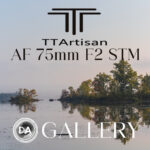

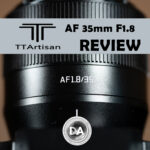
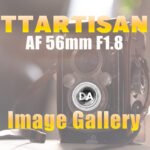
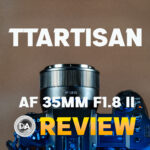

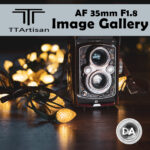


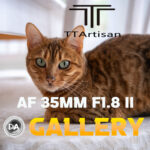
[…] released their first full frame lens in the form of the AF 75mm F2, which I gave a largely positive review here. It offered a compact size, nice build, and good performance in an inexpensive package. Autofocus […]